nadla/iStock via Getty Images
Predicting market risk is easier than predicting return, as demonstrated in the first installment of this series. The caveat is that we shouldn’t conflate easier with ease. Nonetheless, a simple model of using yesterday’s return volatility proves to be a reliable forecast for today. The key question: how far into the future can we effectively forecast vol with this naïve model? The short answer: the reliability fades, quickly.
For perspective, keep in mind that a comparable degree of reliability with the same model with forecasting day-ahead returns would be a license to print money. Alas, Mr. Market doesn’t allow such things with performance data and so forecasting even a day ahead based on the last data point is hopelessly random.
Author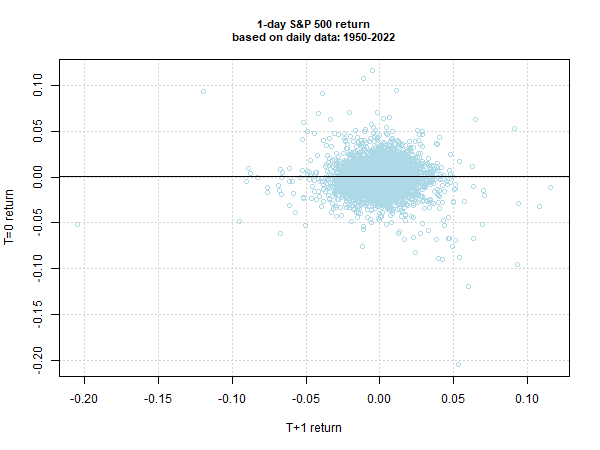
Volatility is another matter. The day-ahead forecast of return risk for the S&P 500 Index, for example, is highly reliable, as shown in the first chart below. It’s not perfect, but it’s close: the correlation between t+0 and t+1 vol is 0.991 since 1950 – a stone’s throw from a perfect score of 1.0.
Author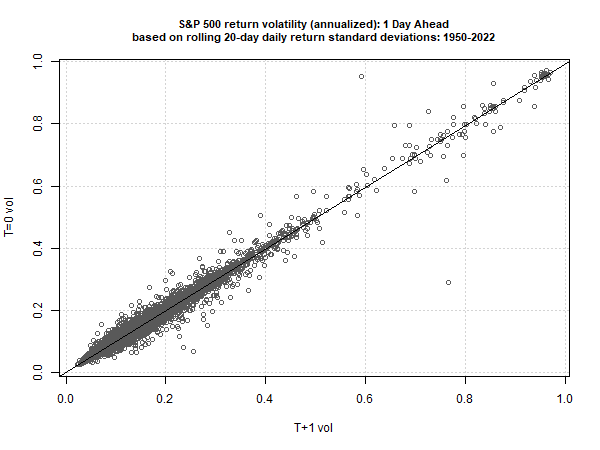
Reliability takes a modest hit when the forecast is pushed out to 5 days, although the correlation is still high at 0.940.
Author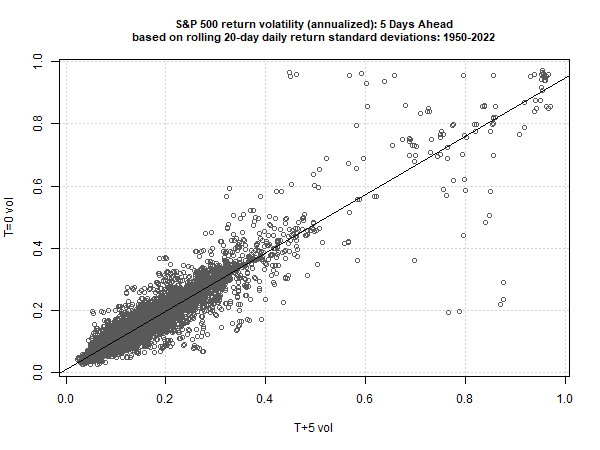
The model starts to show a significant breakdown 10 days ahead, with correlation falling to 0.845.
Author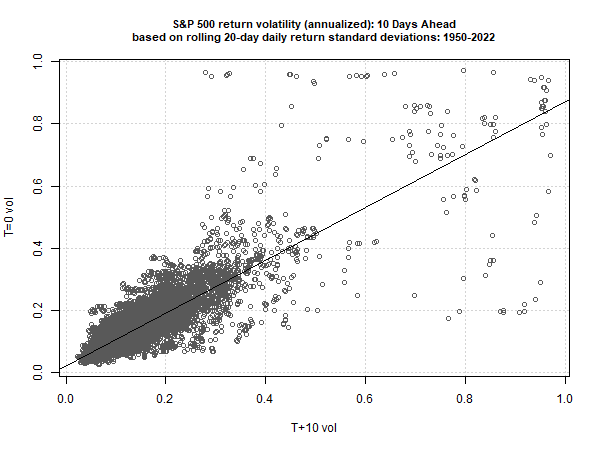
At 20 days, the jig is up and we’ve got borderline noise via a correlation of 0.642.
Author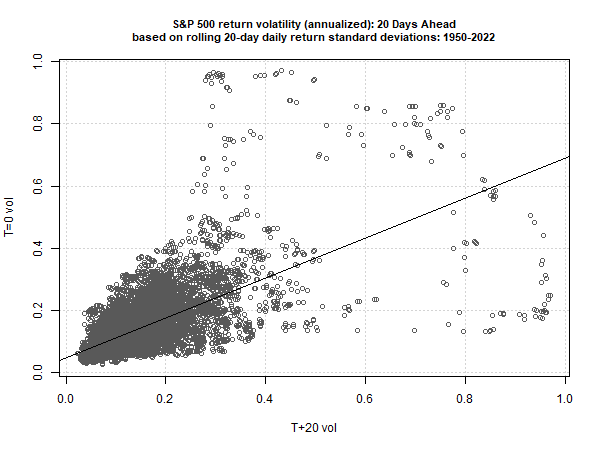
The lesson seems to be that you can develop reasonably reliable vol forecasts for the S&P 500 out to 10 days or so, but by 20 you’ll need another model. Are forecasting analytics up to the job? We’ll explore some possibilities in the next update for this series.
Editor’s Note: The summary bullets for this article were chosen by Seeking Alpha editors.


Be the first to comment